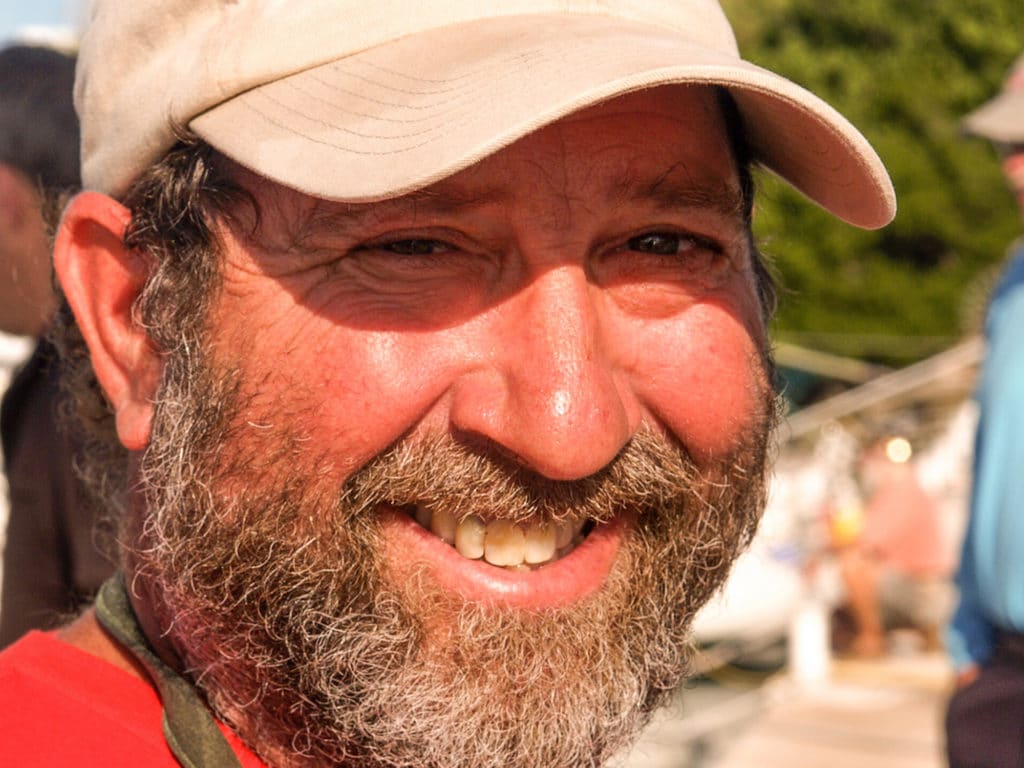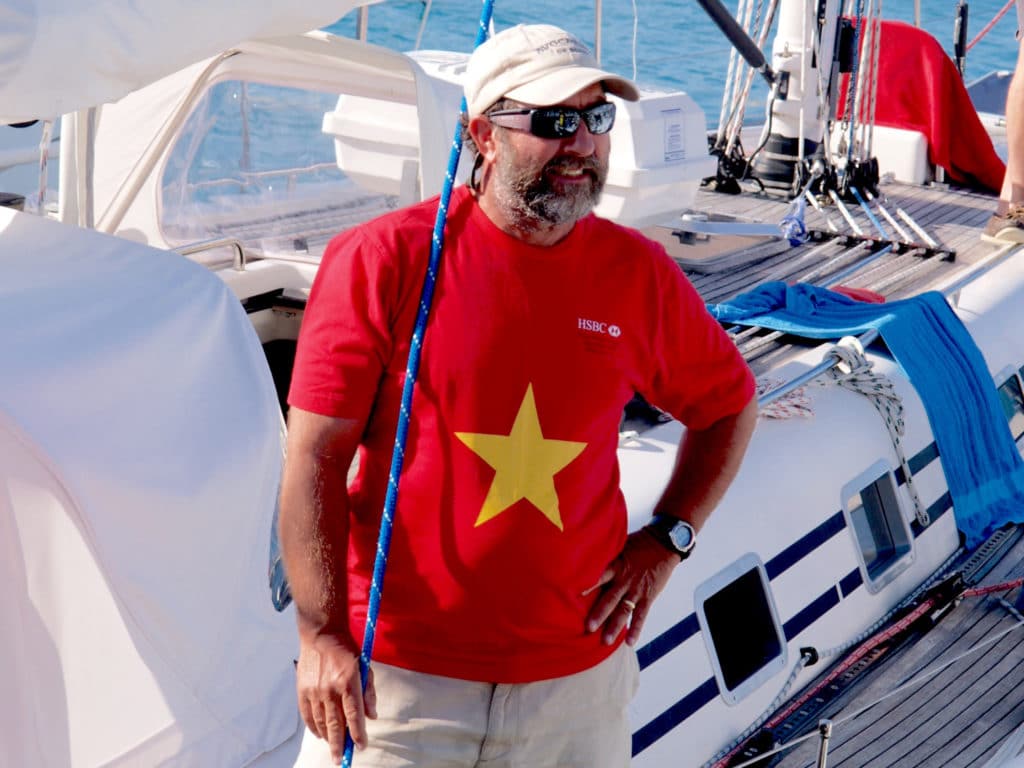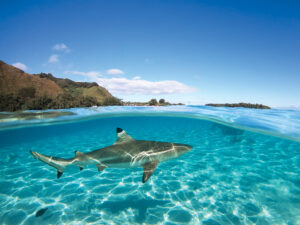
As the coronavirus continues to change and reshape the world as we know it, Cruising World is reaching out to contributors, our partners in the marine industry, and other sailors to get their take on where they are and how they’re doing. We’re asking five questions to each of them, and in this installment, we’re checking in on Hank Schmitt, founder of the North Atlantic Rally to the Caribbean and Offshore Passage Opportunities.
1. Where were you when the full effects of the COVID-19 Pandemic became apparent, and what were things like?
I had been in St. Maarten since early February aboard our OPO flagship Swan 48 Avocation, but left briefly to visit Dominica in mid-March, so I was caught without a port for a few days after arriving back in St. Maarten 11 hours after the island was locked down. Unable to stay, I found refuge in St. Thomas, in the US Virgin Islands, along with 600-plus other boats, all making plans for the hurricane season. Sail north, south, or stay put? I departed May 9, and arrived 9 days later in New York.
While it is better to be quarantined in the Caribbean rather than with the millions of people around the world with less inviting views, not everyone in the islands are on holiday. Tourism and sailing are the driving economic forces in the Caribbean and everyone is out of work because of the lockdown along the entire island chain. Only St. Thomas and Puerto Rico have some semblance of air traffic in and out. Almost every other country is closed to air traffic and denying entry to visiting private boats. Islands that are used to seeing thousands of visitors a day by air, cruise ship, sailboat or vacation charter were empty in the middle of their short five-month season.
Meanwhile, the sailors trapped on islands with no place to go are restricted to their boats in many cases, and almost all the stores ashore are closed. Worse, there are boats without owners present or enough crew to move them. With no way to fly to their boats and no delivery skippers allowed to fly in, many boats may be stuck in the islands with hurricane season approaching. Most insurance companies have deadlines to move boats north or south by the start of June. Owners are getting desperate.
2. So, for owners, how bad are the circumstances?
The biggest problem is that any delivery crew taking a boat from an island cannot get back in. One new owner who flew in last February, closed on a used Lagoon 48, and flew home two days later, had planned to return six weeks later for the sail back to the States. Instead the boat was stuck in St. Maarten for weeks with no end in sight. The boat broker knew of a Florida-based construction consultant working on a big time-share resort was also stuck in St. Maarten trying to get home to his family. The broker put the consultant in touch with the new Lagoon owner. The consultant had no sailboat experience or captain’s license to even drive a powerboat. But never having met, they agreed to help each other out with a free way off the island for the consultant and a free delivery of the boat for the owner. Luckily, the 100-mile, downwind, overnight voyage to St. Thomas went smoothly and customs did not bat an eye.
Another boat owner was looking to put a “posse” together and have a four-engine speed boat take him from St. Thomas to St. Maarten, so they could go under the bridge into the Simpson Bay Lagoon and take his boat out without ever setting foot on land. Another option under consideration for a boat stuck in Soper’s Hole, BVI, was to untie the yacht and let it drift into international waters, where a skipper could step aboard and bring her to Red Hook on St. Thomas and claim salvage rights and give it back to the owner.
Right now, St. Thomas is the only sure bet to fly in crew and sail out of. While masks are required to go into any stores, the grocery stores and pharmacies never fully closed during my entire six weeks there. Starting in early May, you could fly in and not quarantine. You could freely take a taxi to your boat. Hotels and rentals ashore were closed, though.
Some airports on other islands may be opening soon, allowing crews and owners to fly in, but we have watched too many flights get sold and then flights cancelled over the last few weeks to believe anything. Owners are getting very desperate. Who wants to miss a season without their boat—or leave it in the Hurricane Belt?
3. How was your sail home to New York from St. Thomas?
I have made the passage from the Caribbean to New England every year except one since 1999. Most times, we stay east and sail almost due north on a beam reach to Bermuda before making the second, more challenging leg, from Bermuda across the Gulf Stream to Newport, Rhode Island. Departing from St. Maarten is always easier, since you start 90 to 100 miles further east than if you depart from Nanny Cay or St. Thomas. Just having those extra 100 miles of easting allows you to relax the helm a bit and settle into keeping the wind just aft of the beam in anything over 15 knots true wind, and forward of the beam for speed if the winds falls below that.
I seldom set a waypoint sailing offshore, but rather try and find a comfortable and quick sailing angle for the first half of a passage. As long as you are within 20 or even 30 degrees of your desired course, you are OK, as long as you have a good idea of which way the wind will shift in two or three days. It only gets more important to follow a compass course to a waypoint the last couple of days before arrival.
On this passage, even with the 100 miles more western departure from Red Hook, we did not have to stay east to get to Bermuda because it was closed except for emergency stops. We started with three days of great sailing in trade winds out of the east and little south of east. By the time we hit the latitude of Bermuda, we were 160 miles west of the island, and shaved 100 miles from the traditional passage.
Often the winds will kick in from the northeast north of Bermuda, which allows you to crack off and continue to sail on a near beam reach, just forward or aft of beam as best suited, and get west to cross the Gulf Stream further west since you know the flow will bring you back 30 to 40 miles east in the crossing. Sailing at 330 degrees brought us across 70 degrees west, and less than 2 degrees from our rounding at Montauk Point, at the tip of Long Island, New York. When the winds clocked to southwest, as is normal this time of year, we were able to tack over and sail north to cross the Gulf Stream with the winds and current running in roughly the same direction, in 20 to 25 knots of true wind. It was definitely aft-of- beam conditions, and fast sailing with 8- to-12 foot waves. Our course was north, but we were making a northeast course over the ground while sailing in the stream.
We rounded Montauk eight and a half days out of Red Hook, and were docked before noon, just shy of a nine-day passage dock to dock.

4. Did you use a weather router?
People laugh when I tell them that, except for my annual North Atlantic Rally to the Caribbean (sailopo.com/NARC_Rally_NARC_Rally_Overview.aspx), I never pay for a weather service. There are so many people in each sailing port talking about weather, you can get your report sitting at any bar. Of course, with COVID-19 closing those establishments, that option needs revisiting. But there is still enough scuttlebutt on the docks and from talking with friends on WhatsApp to know if there is a good weather window or not.
Full disclosure: I did, after listening to a weather service’s podcast offering one, sign up for a free weather departure forecast. But this is not to be confused with actual weather routing. This is just a report at the time of departure that provides a several-day forecast that diminishes in accuracy over time.
But before I had a chance to read it, we had a good weather picture from talking to other sailors, so we decided to depart Red Hook a day early and double-handed. When we arrived within cell phone range of Montauk, we learned that Tropical Storm Arthur was holding up a lot of boats with its early May arrival and path across the route leading from the Caribbean to the US. Since we had no satellite phone or communications while at sea, we were happily ignorant of a 40-knot depression that might have caught us if we had decided to get lazy and sail slow—something that never crossed our minds. And, when I checked my e-mail upon arrival, the weather departure report was in my inbox with a recommendation to wait until the following week of May 16. I am glad we did not delay.
I have a friend who did a passage with me last year, and who bought a boat this year and made it as far as Georgetown, Bahamas. He was buddy boating back last month with three other boats. A weather router based in Florida convinced the skippers of the other three boats that they had better get to Florida ASAP. That ended the nice four-boat buddy-boat trip. I fear the cruising sailor is giving up too much freedom to weather reports and weather geeks sitting in offices far away. We are losing sight of having your boat prepared for anything. Although I recognize that knowing bad weather is lurking ahead is a great idea, it shouldn’t come at a cost of independence and self-sufficiency.
5. You’ve spent many a winter in the Caribbean. What do you predict for next year?
The rallying cry after hurricanes Irma and Maria two years ago was, “Make sure you go back and spend time and money in the affected islands.” While spot on in identifying the need, it was disconcerting to see $13.50 Painkillers and $42 rib dinners once you got there. And while we were happy to come back and charter and visit with our own boats, we weren’t thrilled with having to pay hundreds of dollars in clearing-in fees for an eight-day visit. If you are going to add an 18-percent tip to every meal and call happy hour $1 off an $8 drink being happy, don’t expect many cruisers to stay long.
Next year there will be much less disposable income in America and Europe. All the islands that rely on time-share visitors and cruise-ship passengers are in trouble. But the corona virus does not kill boats. Many people will be saying, “If the islands are open I am going back and anchoring off some deserted beaches for days at a time.” But cruisers will not pay chartering and cruise-ship menu prices. Instead, they will go to places like Dominica, where customs and paperwork takes 15 minutes and costs 15 dollars EC, which is about $6.
With today’s social media outlets to stay in touch with and inform cruisers, wise islanders will try and put on a welcome face to entice sailors to visit next year. Let’s hope most islands will be able to welcome back cruisers with a “Welcome to the Caribbean” big smile and return the courtesy they should expect from visitors to their proud countries.








